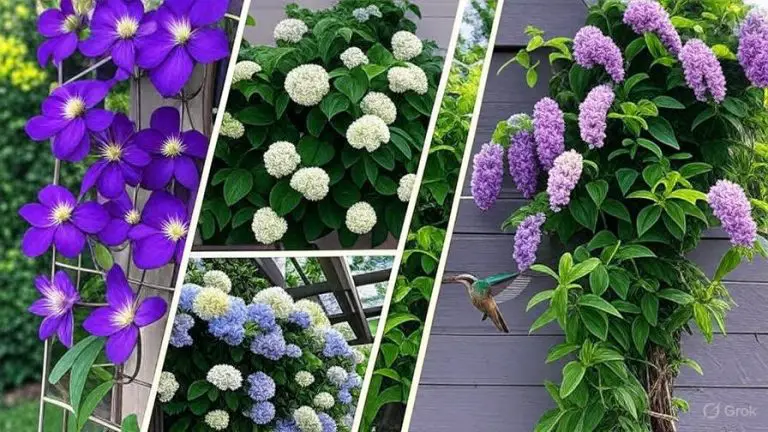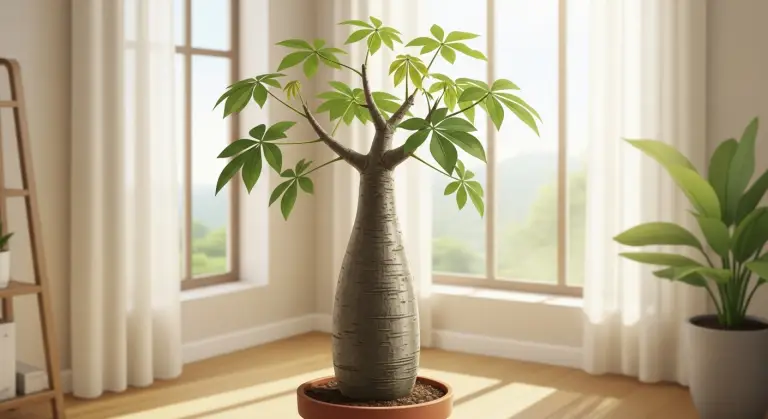Rubber Plant Potting and Soil Requirements: Choosing the Ideal Mix
When it comes to caring for your rubber plant, selecting the right potting mix is a crucial step toward ensuring its optimal growth and health.
Understanding the specific soil requirements of rubber plants is key to creating an ideal environment for them to thrive. In this article, I am going to explain everything about choosing the right potting mix for Rubber Plants.
So, without further ado, let’s get started-
What's On the Page
- 1 Pre-Packaged or Homemade: Which Potting Mix is Right for You?
- 2 Essential Components of a Potting Mix
- 3 DIY Mix Recipe: Creating Your Own Potting Mix
- 4 Repotting Your Rubber Plant: A Step-by-Step Guide
- 5 Beyond Potting Mix: Additional Care for Your Rubber Plant
- 6 Frequently Asked Questions (FAQs)
- 7 Conclusion
Pre-Packaged or Homemade: Which Potting Mix is Right for You?
There are two main options to consider when selecting a potting mix for your rubber plant: pre-packaged mixes and homemade mixes. Pre-packaged mixes are convenient and readily available, formulated specifically for houseplants or tropical plants.
They are often a blend of peat moss, perlite, and vermiculite, providing a balanced mix of moisture retention and aeration. On the other hand, creating your own potting mix allows for more customization and control over the ingredients used.
Essential Components of a Potting Mix
When selecting a potting mix for your rubber plant, it’s important to consider the specific needs of these tropical plants. Rubber plants prefer a well-draining potting mix that retains moisture while allowing excess water to flow out easily. This helps prevent waterlogged soil, which can lead to root rot.
In addition to the basic components of a potting mix, you can also incorporate organic matter such as well-aged compost or coconut coir. These additions improve the overall fertility of the soil and provide additional nutrients for your rubber plant.
However, be cautious not to add too much organic matter, as it can retain excessive moisture and lead to overwatering.
Another factor to consider is the pH level of the potting mix. Rubber plants generally prefer a slightly acidic to neutral pH range of 6.0 to 7.0. Most commercial potting mixes are formulated within this pH range, but if you’re creating your own mix, you can adjust the pH by adding ingredients like lime to raise it or elemental sulfur to lower it.
When repotting your rubber plant, choose a pot that is slightly larger than the current one to allow room for growth. Select a pot with drainage holes to prevent water from accumulating at the bottom. Proper drainage is crucial to prevent waterlogged roots, which can lead to various issues including root rot and fungal diseases.
It’s also worth mentioning that the potting mix will gradually break down and lose its structure over time. Therefore, it’s recommended to repot your rubber plant every 1 to 2 years to refresh the potting mix and provide fresh nutrients for optimal growth.
DIY Mix Recipe: Creating Your Own Potting Mix
If you prefer a hands-on approach, creating your own potting mix is a rewarding option. Start with a base of peat moss or coconut coir, which provides moisture retention. Add perlite or pumice to improve aeration and drainage.
You can also incorporate a small amount of well-aged compost or organic matter for additional nutrients. Experiment with different ratios to find the mix that works best for your rubber plant.
Repotting Your Rubber Plant: A Step-by-Step Guide
When it’s time to repot your rubber plant, follow these steps for a successful transition. Choose a pot that is slightly larger than the current one, allowing room for growth. Ensure the pot has drainage holes to prevent waterlogging.
Gently remove the plant from its current pot, being careful not to damage the roots. Place the plant in the new pot, adjusting the soil level to match the previous depth. Fill in the remaining space with the potting mix, firming it gently around the roots. Water the plant thoroughly and allow excess water to drain out.
Maintaining Proper Moisture Levels
Proper watering is crucial for the health of your rubber plant. Allow the top inch of soil to dry out slightly before watering again. This prevents overwatering, which can lead to root rot.
When watering, ensure water reaches the root zone without leaving the plant sitting in standing water. Monitor the moisture level regularly by sticking your finger into the soil. Adjust the watering frequency based on the plant’s needs and environmental conditions.
Beyond Potting Mix: Additional Care for Your Rubber Plant
In addition to the potting mix, consider other care factors for your rubber plant. Rubber plants thrive in bright, indirect light, so place them near a window with filtered sunlight. Avoid exposing them to direct, intense sunlight, as it can scorch the leaves.
Maintain a moderate humidity level by misting the leaves or placing a tray of water nearby. Regularly dust the leaves with a damp cloth to remove dust and promote proper photosynthesis.
Proper Fertilization Techniques
Rubber plants benefit from regular fertilization during the growing season, typically spring and summer. Use a balanced, water-soluble fertilizer specifically formulated for houseplants.
Follow the instructions on the fertilizer package for the correct dilution and application frequency. Over-fertilization can lead to fertilizer burn, so it’s important to avoid excessive amounts.
Maintaining an Optimal Plant Structure
Pruning is an essential aspect of rubber plant care to promote bushier growth and maintain the desired shape and size. Trim any leggy or damaged branches using clean, sharp pruning shears.
You can also trim the top of the plant to encourage branching. Prune during the active growth period to stimulate new growth.
Providing the Right Environment
Rubber plants prefer temperatures between 60°F and 75°F (15°C to 24°C). Avoid placing them in areas with drafts or temperature extremes. They also appreciate slightly higher humidity, so consider using a room humidifier or placing the plant on a pebble tray filled with water.
Remember to monitor and adjust the temperature and humidity levels based on the plant’s needs and your home environment.
Frequently Asked Questions (FAQs)
Can I use regular garden soil for my rubber plant?
It is not recommended to use regular garden soil for rubber plants. Garden soil is usually too heavy and retains too much moisture, which can lead to root rot. It’s best to use a well-draining potting mix specifically formulated for indoor plants.
Can I reuse the potting mix from my old rubber plant?
Reusing potting mix is possible, but it’s important to refresh it before using it again. Remove any debris or dead plant matter from the old mix and add fresh components like perlite or vermiculite to improve its structure and drainage.
How often should I repot my rubber plant?
Rubber plants generally require repotting every 1 to 2 years, or when they have outgrown their current pot. Signs that your plant needs repotting include roots growing out of the drainage holes, stunted growth, or the pot becoming too crowded with roots.
How can I increase humidity for my rubber plant?
Rubber plants appreciate moderate humidity levels. You can increase humidity by misting the leaves with water, placing a tray of water near the plant, or using a room humidifier. Grouping plants together can also create a microclimate with higher humidity.
Should I fertilize my rubber plant during winter?
Rubber plants generally enter a period of slower growth during winter. It’s best to reduce or stop fertilization during this time. Resume fertilizing in spring when the plant’s growth picks up.
How do I clean the leaves of my rubber plant?
You can clean the leaves of your rubber plant by gently wiping them with a damp cloth or sponge. This helps remove dust, allowing the leaves to absorb more light for photosynthesis. Avoid using any leaf shine products as they can clog the plant’s pores.
Conclusion
Choosing the right potting mix for your rubber plant is vital for its overall health and growth. By understanding the soil requirements and following proper care practices, you can create an optimal environment for your rubber plant to thrive.
Consider factors such as light, humidity, watering, fertilization, pruning, and environmental conditions to ensure the best possible care for your beloved rubber plant.
With the right care and attention, your rubber plant will become a stunning and vibrant addition to your indoor space. Happy gardening!
- Growing Baobab Trees Indoors: Complete Care Guide - July 10, 2025
- Why Are My Banana Tree Leaves Breaking? A Complete Guide to Prevention and Care - July 10, 2025
- Banana Plant Leaves Turning Black: Complete Care Guide - July 10, 2025


